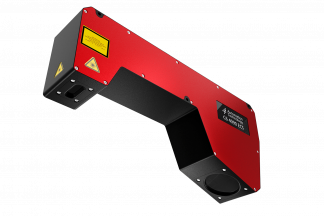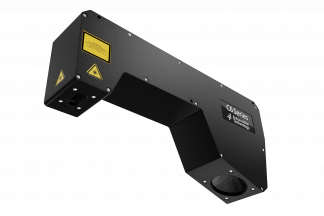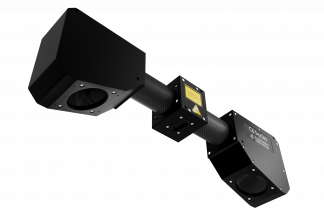Fastest 3D Laser Triangulation Sensor via On-Sensorchip Processing
On this page
The Challenge: Increasing Data Speeds in 3D Sensors
Laser triangulation is an ideal method for high-speed applications, especially in inline metrology, where fast processing is required to keep up with production throughput. To meet the growing demand for speed, there is a continuous need to increase the data rates of 3D sensors.
The profile speed of a 3D sensor depends on the frame rate of the image sensor. However, traditional image detectors face inherent speed limitations.
Limitations of Traditional Image Sensors
- High power consumption
- Increased bandwidth requirements
- Bulky designs
The Solution: On-Sensorchip Processing
To overcome these limitations and achieve greater performance, intelligence needs to be integrated directly into the sensor chip. This approach can increase processing rates to an impressive 20–30 Gpixels/s.
On-sensorchip processing achieves this by dramatically reducing the number of pixels transferred from the detector to the FPGA. Instead of processing the entire image, only the pixels around the laser line are transferred, while background pixels are ignored.
This capability is not possible with standard 2D CMOS sensors. It requires a custom-designed detector with specialized functionality tailored for this purpose.
Key Benefits of On-Sensorchip Processing
This approach offers several key advantages over conventional 3D sensors:
- At least 10x higher profile rate compared to traditional 3D sensors
- Lower platform costs, due to more efficient processing
- Reduced power consumption, making it more energy-efficient
Applications Requiring On-Sensorchip Processing
On-sensorchip processing is critical for applications that demand extremely high data rates, including:
- Electronics inspection: High-speed precision measurements are necessary for inspecting small and intricate components.
- Transportation applications: For example, in road pavement scanning, this technology enables sensors mounted on trucks or vans to operate at highway speeds, collecting data efficiently.
- Measurement of long products: Applications like wire or tube manufacturing benefit from the ability to gather high-speed data for lengthy objects.




